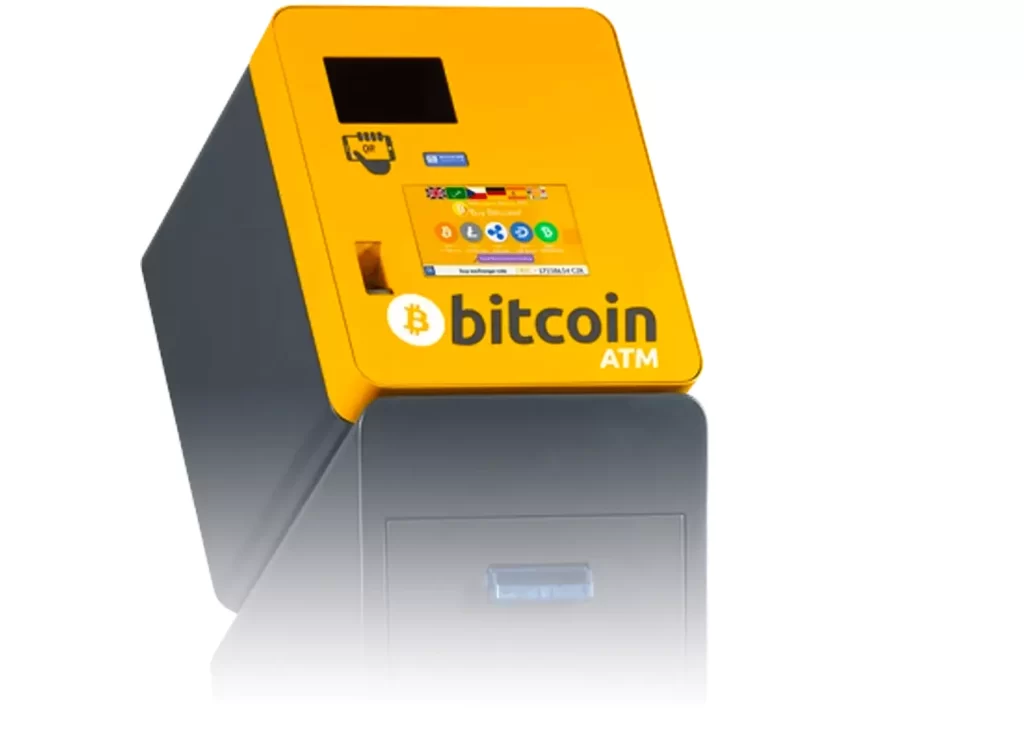
Crypto or Bitcoin ATMs have emerged as a curious and revolutionary addition. While they may resemble their traditional counterparts, regular ATMs, the functionalities they offer, and the underlying technology make them a breed apart.
In this article, we’ll discuss the fundamental differences that set Bitcoin ATMs apart from regular ATMs and explore why they’re gaining popularity among crypto enthusiasts and newcomers.

Content
Transaction Type: Cash vs. Crypto
The most significant divergence between a Bitcoin ATM and a regular ATM lies in the type of transaction they facilitate.
Regular ATMs have been a staple of modern banking for decades. They are primarily designed for cash-based operations, allowing users to withdraw and deposit physical currency into their bank accounts. These machines are a common sight, catering to everyday financial needs.
On the other hand, Bitcoin ATMs are a relatively recent addition to the financial landscape, geared toward the burgeoning world of cryptocurrency.
These machines enable users to buy and sell Bitcoin and other cryptocurrencies using various methods, including cash, credit, or debit cards. Unlike regular ATMs, Bitcoin ATMs are not linked to a traditional bank account but are directly connected to a cryptocurrency exchange through the internet.
Physical Appearance and Components
At first glance, Bitcoin ATMs closely resemble regular ATMs, designed to blend seamlessly into the banking infrastructure. However, it’s essential to note that appearances can be deceiving, as the internal components and purpose diverge significantly.
Regular ATMs are equipped with features that allow users to interact with their bank accounts. They typically include a card reader, a pinpad for entering account information, a cash dispenser, and sometimes a deposit slot for adding funds to the account. The primary function is to facilitate cash-based transactions within the traditional banking system.
On the other hand, Bitcoin ATMs consist of a monitor, a QR code scanner, a bill acceptor, and a dispenser. While they may look like regular ATMs, they lack the ability to interact with a traditional bank account. Instead, these machines are designed to enable cryptocurrency transactions by connecting users to a cryptocurrency exchange via the internet.
Fees and Transaction Limits
Another crucial difference between Bitcoin ATMs and regular ATMs lies in the fees associated with their use and the limits they impose on transactions.
Regular ATMs typically have lower transaction fees or none at all when used by account holders of the associated bank. There may be fees for out-of-network transactions or foreign cardholders, but they tend to be lower than those charged by Bitcoin ATMs. Additionally, regular ATMs often have higher withdrawal limits, allowing users to access larger amounts of cash.
Bitcoin ATMs, on the other hand, are known for their higher fees, which can range from 7% to 20% or more in some cases. These fees cover the machine’s cost and the convenience of purchasing or selling cryptocurrencies on the spot.
They also tend to have more stringent transaction limits compared to cryptocurrency exchanges. These limits can vary from machine to machine and often depend on the user’s identity verification status.
Gateway to Crypto for the Non-Tech Savvy
Despite their higher fees and transaction limits, Bitcoin ATMs serve a valuable role in the cryptocurrency ecosystem, particularly for those who aren’t tech-savvy. These machines offer a user-friendly and tangible way to enter the world of cryptocurrencies. They provide a sense of familiarity by mimicking the appearance and interaction of regular ATMs, making the transition into the world of digital assets more accessible and less intimidating.

As a writer, Richard is an advocate of blockchain technology and cryptocurrency in general. He writes about all things from cryptography to economics, with a focus on how it applies to cryptocurrencies. He is also passionate about writing about topics such as decentralization, open-sourced software development, and copyright law.



